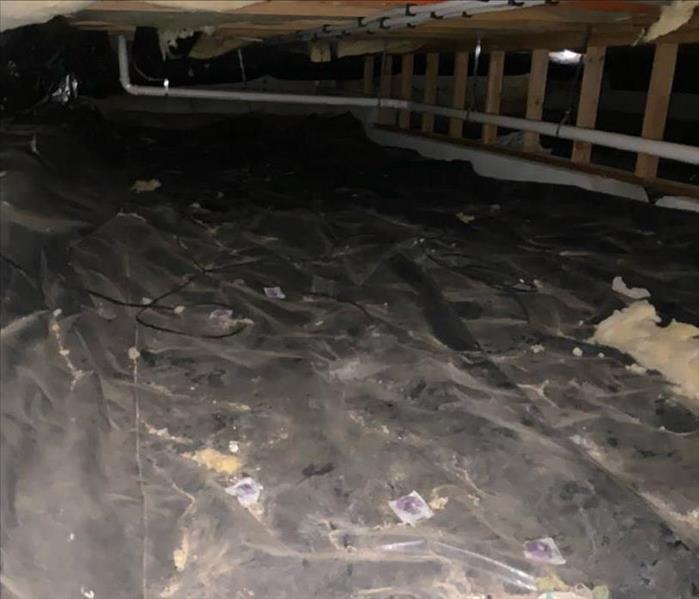How to Check Your Crawlspace for Moisture: A SERVPRO Guide
7/29/2024 (Permalink)
At SERVPRO of Twin Falls and Jerome Counties, we understand the importance of maintaining a dry and healthy crawlspace to protect your home from potential damage. Excess moisture can lead to mold growth, wood rot, and structural issues. Regularly checking your crawlspace for moisture is essential to catch problems early and avoid costly repairs. Here’s our step-by-step guide to help you inspect your crawlspace for moisture:
- Gather the Necessary Tools
Before you begin, ensure you have the following tools:
- Flashlight
- Moisture meter
- Hygrometer (to measure humidity levels)
- Protective clothing (long sleeves, pants, gloves, and a mask)
- Knee pads (if needed)
- Prioritize Safety
Crawlspaces can be cramped and potentially hazardous. Before entering, check for signs of wildlife or pests. Wear protective clothing to guard against allergens, mold spores, and debris.
- Inspect Foundation Walls
Using a flashlight, thoroughly examine the foundation walls for signs of dampness, water stains, or efflorescence (a white, powdery substance). These indicate moisture intrusion from outside.
- Look for Standing Water
Check the crawlspace floor for standing water or wet soil. Even small puddles can signal a larger moisture issue. If you find standing water, address the source immediately.
- Measure Moisture Levels
Use a moisture meter to check the moisture content of wooden structures in the crawlspace. Insert the meter's prongs into the wood and read the levels. Ideally, moisture content should be below 20%. Higher readings indicate a risk of mold growth and wood rot.
- Monitor Humidity Levels
Use a hygrometer to measure crawlspace humidity. Aim for relative humidity below 60%. High humidity can foster mold and mildew growth.
- Check for Mold and Mildew
Inspect the crawlspace for visible signs of mold or mildew, which often appear as dark spots or patches on surfaces. Mold can also produce a musty odor, so note any unusual smells.
- Examine Insulation and Vapor Barriers
If your crawlspace has insulation, check for signs of dampness or mold. Ensure the vapor barrier (a plastic sheet on the ground) is intact and not allowing moisture through.
- Address Issues Promptly
If you discover moisture, mold, or water intrusion, take immediate action. This may involve sealing foundation cracks, improving home drainage, installing a dehumidifier, or consulting SERVPRO for professional assessment and repairs.
- Schedule Regular Maintenance
Check your crawlspace for moisture at least twice a year, ideally in spring and fall. Regular inspections help you catch issues early and keep your crawlspace dry and healthy.
By following these steps, you can ensure your crawlspace remains free of moisture-related problems, protecting your home's structural integrity and health. For professional assistance, trust SERVPRO of Twin Falls and Jerome Counties—Your experts in moisture control and home restoration.






 24/7 Emergency Service
24/7 Emergency Service